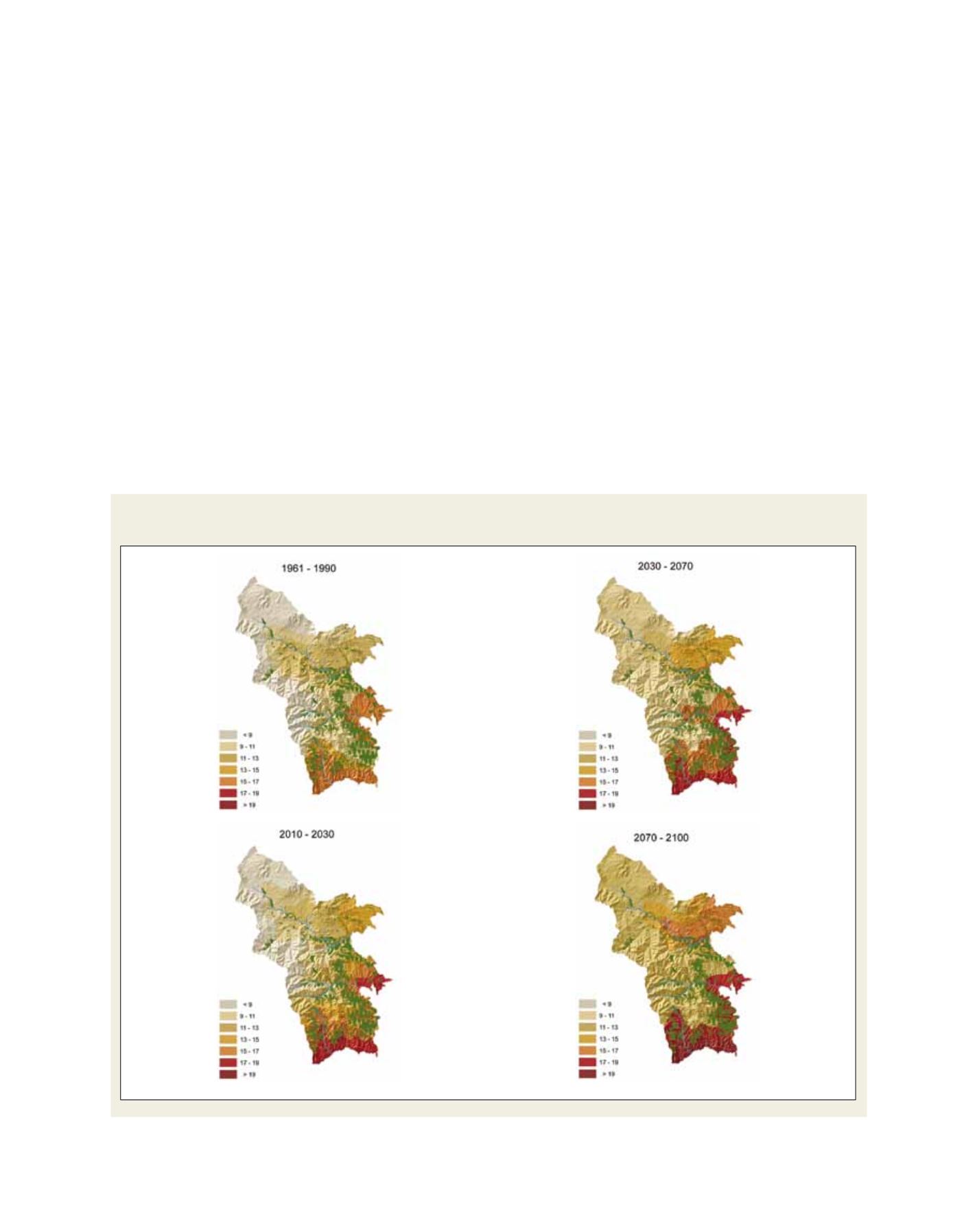

[
] 200
E
cosystems
there was a trend towards increases in monthly total
precipitation for the autumn months, which may have an
impact on forest growth.
Consultations with forest specialists identified the need
for specific assessment of forest ecosystem vulnerability to
hydrometeorological conditions to support the improve-
ment of forest management planning. ArmStateHydromet
carried out the assessment using the multivariable
analogue method, which takes into account maximum
and minimum temperature, daily maximum precipitation
and wind velocity. The results showed that, in general,
the Syunik region is moderately vulnerable, with relatively
high vulnerability in selected forest areas such as Meghri
and Kapan. Daily maximum precipitation was the most
significant among the climate parameters.
Climate change future scenarios
To improve forest and protected area management plan-
ning under changing conditions, area-specific climate
change scenarios were developed under the project for the
management is implemented by three Forest Enterprises: Sisian, Syunik
and Kapan. Specially protected forest areas, which cover about 28% of
Armenia’s forests, are managed by respective State Non-Commercial
Organizations under the Ministry of Nature Protection. Several
protected areas, including the Arevik National Park and the Shikahogh
State Reserve are located in the Syunik region, which is identified both
nationally and internationally for its conservation priority.
Climate variability and climate change
Climate patterns across the Syunik region, historical trends and
observed changes were estimated at local scale under the project to
support the assessment of climate change impacts on forest ecosystems.
This involved the analysis of average, maximum and minimum air
temperatures, total precipitation, wind velocity and air humidity time
series as well as intra-annual variability, with a focus on the growing
period. The results showed a persistent increase in temperature of 0.7°-
0.9°C between 1935 and 2010, becoming more pronounced in the last
two decades. The analysis also revealed some intra-annual features: the
largest increase inmonthly mean temperature was inMarch, whichmay
result in more frequent early onset of vegetation growth. Furthermore,
Source: Armenian State Hydrometeorological and Monitoring Service
Average air temperature for warm half-years over the Syunik region for (A) baseline period (1961-1990); and future
projections: (B) 2010-2030; (C) 2030-2070 and (D) 2070-2100
(A)
(C)
(B)
(D)
















